These 22 monochrome decorated tombs are funerary monuments which cannot be found anywhere else other than Deir El-Medina (…)
Deir el-Medina, the monochrome tombs
(…) The silhouettes on the walls are painted in yellow-ochre on a white background, while the use of black and red identify restricted representations, internal details of figures and objects and the delimitation of hieroglyphic inscriptions... [Bernard Bruyère, 1952]
The necropolis above Deir el-Medina is a three-dimensional labyrinth of tombs entangled to each other. In this village enclosed by a wall resided for life the highly qualified craftsmen authors of the objects and decorations of the royal tombs of Thebes. Each tomb was organized like a scale model of a royal tomb with an entrance followed by a staircase and two small rooms - one for meditation and the other for the sarcophagus.
Specifically in the monochrome TT219 Nebenmaat and TT335 Nakhtamon (1) tombs, I was struck by the great mastery and balance of the whole, the economy of means and the reliability of the patterns and the line, painted in one action usually without retouching. This makes the work more alive, more present, and somehow more understandable for our educated eye to contemporary art than that of the royal tombs.
The principle which is present in these tombs of partitioned drawings enclosing a balanced set of figures and signs painted with a free hand can be found in a certain way a few millennia later in several pictorial movements of the XXth century, in particular the expressionist movement (Die Brücke, Berlin, 1910-1920) and neo-expressionist movement (A.R. Penk, Germany, Jean-Michel Basquiat, NYC, 1970-1980).
TT1 Sennedjem tomb is a polychrome on a strong yellow ochre base - the solar light -, achieved with six fundamental colors: white chalk, black soot, red and yellow ochre, lapis lazuli and turquoise blue. One hypothesis is that the craftsmen who worked on this tomb could be the same as those who worked on the tomb of Queen Nefertari.
---
(1) TT335 tomb of the sculptor Nakhtamon was discovered in 1925 by the renowned French archaeologist Bernard Bruyère
TT1 Sennedjem tomb | Deir el-Medina
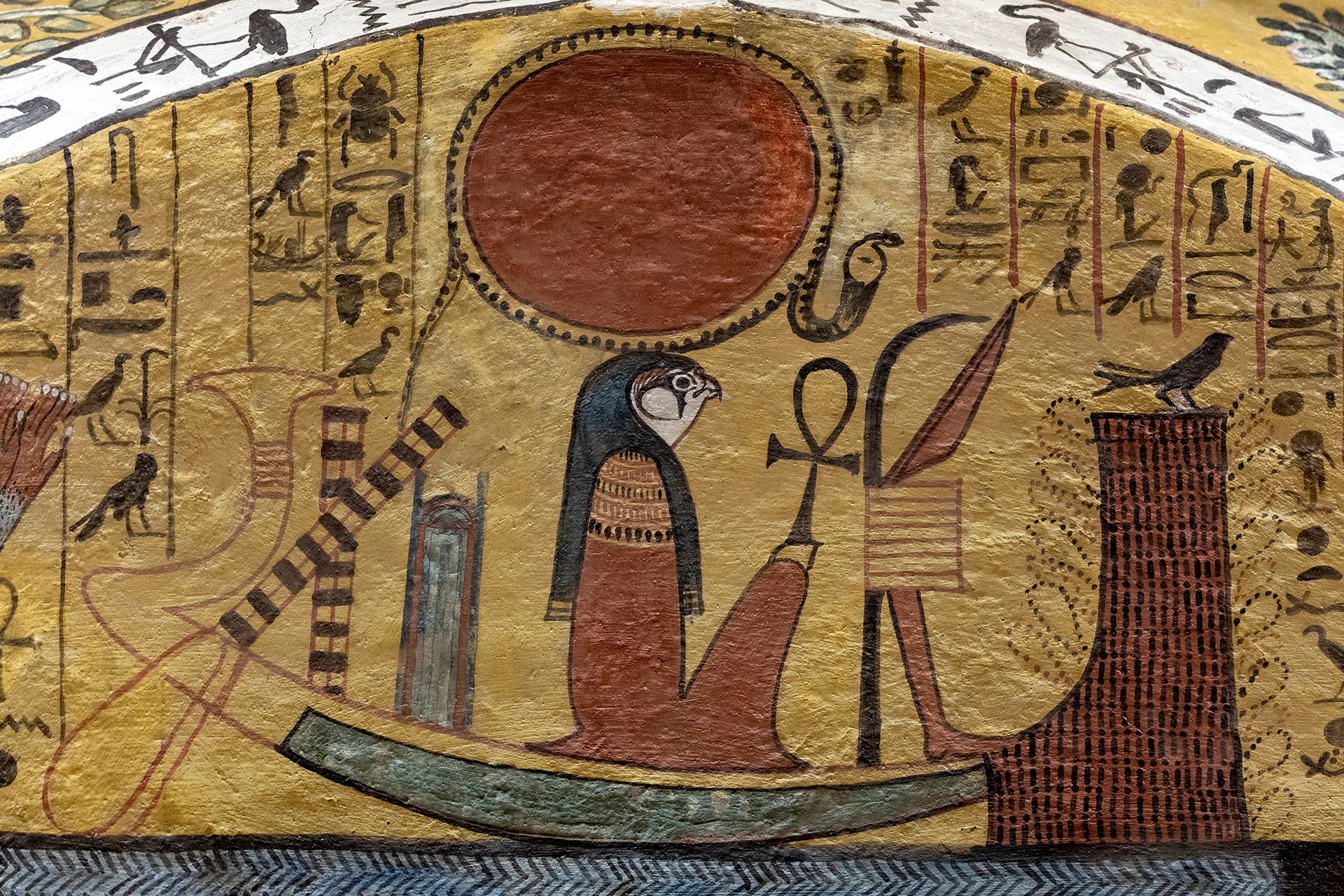
The falcon sky-god Horus associated with the sky, the sun, and war
© pascal schmidt / hans lucas - March 2021
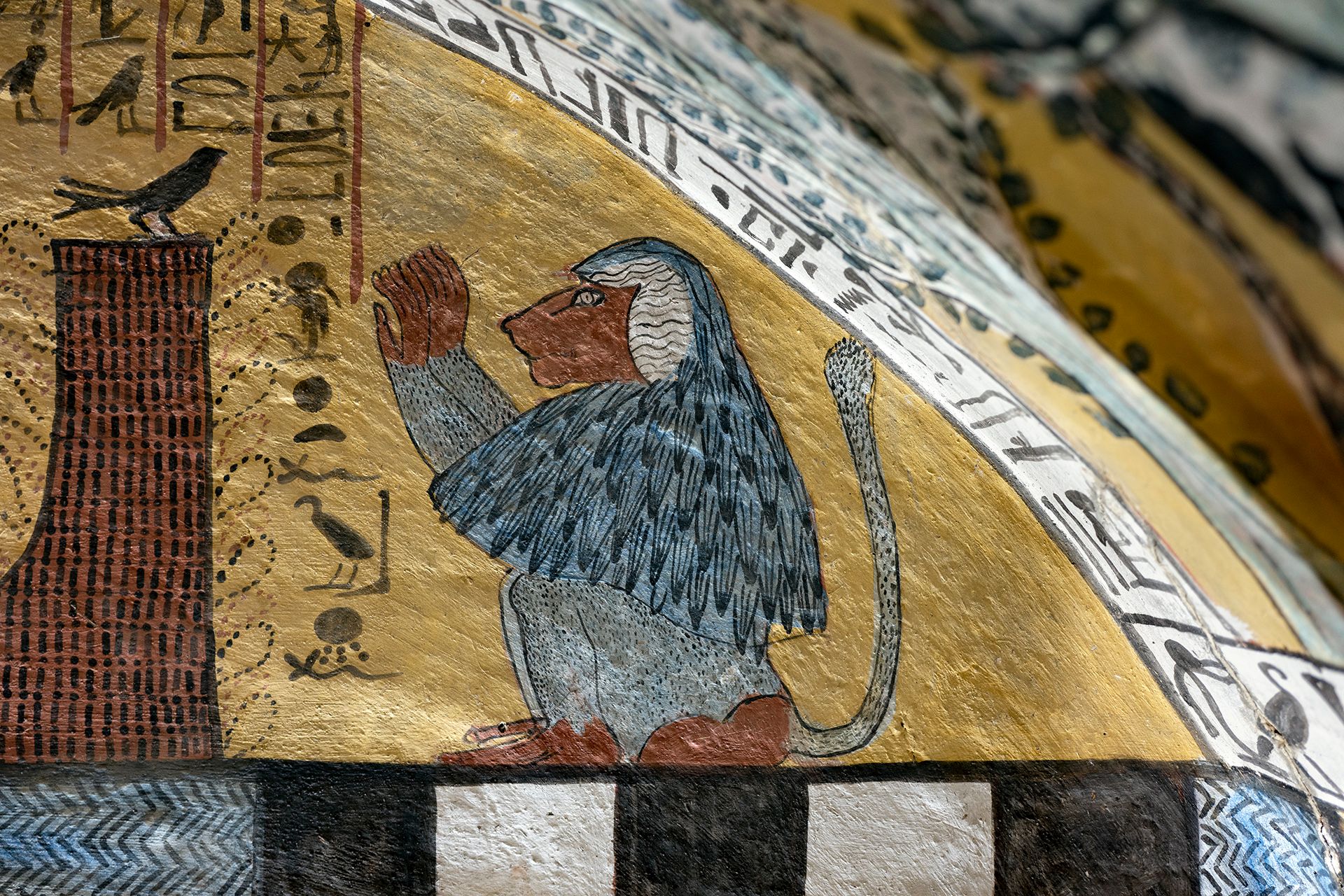
The baboon moon-god Thot
© pascal schmidt / hans lucas - March 2021
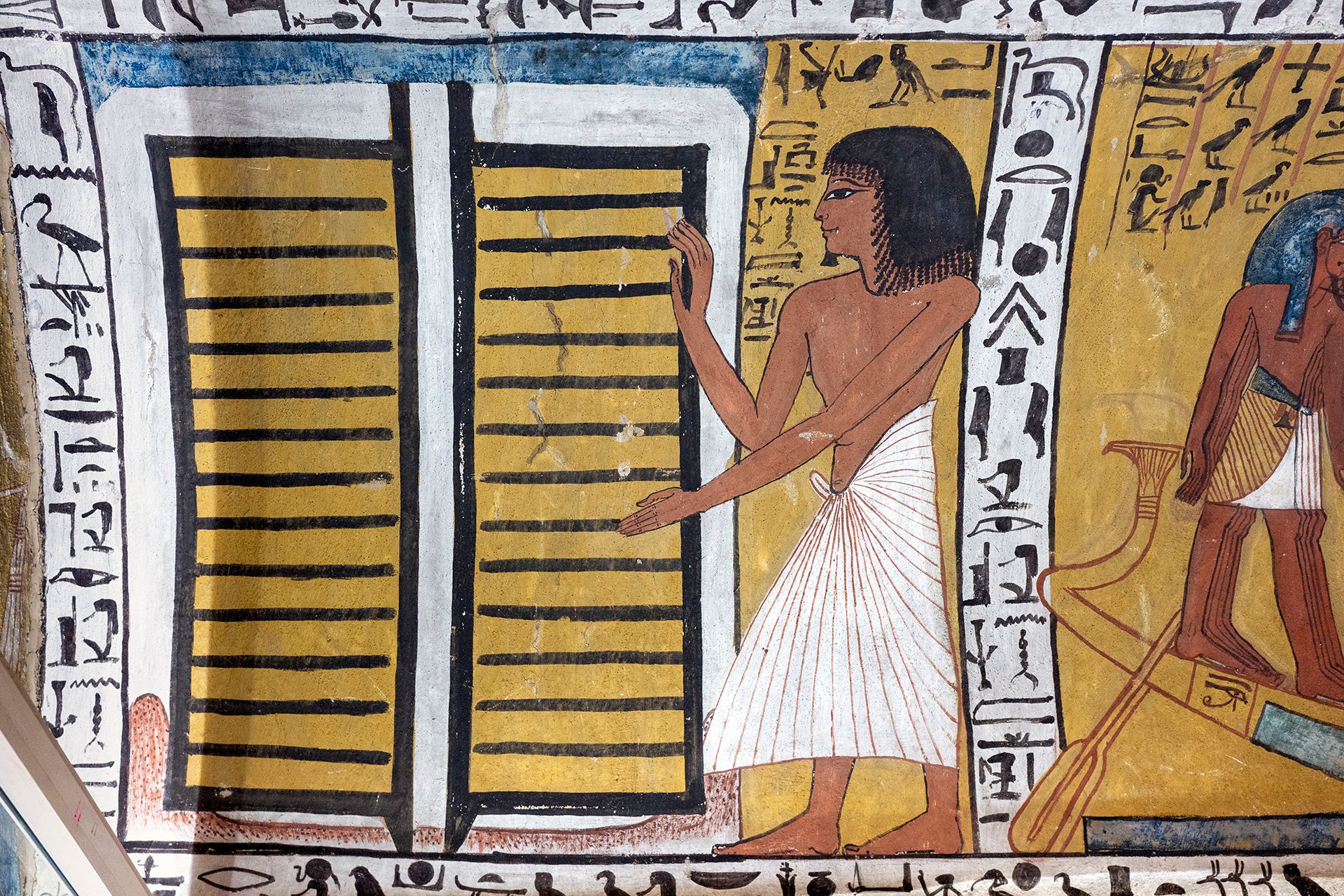
The doors of the sky - the divine world, and of the hills - the land of the living
© pascal schmidt / hans lucas - March 2021

The solar barque
© pascal schmidt / hans lucas - March 2021
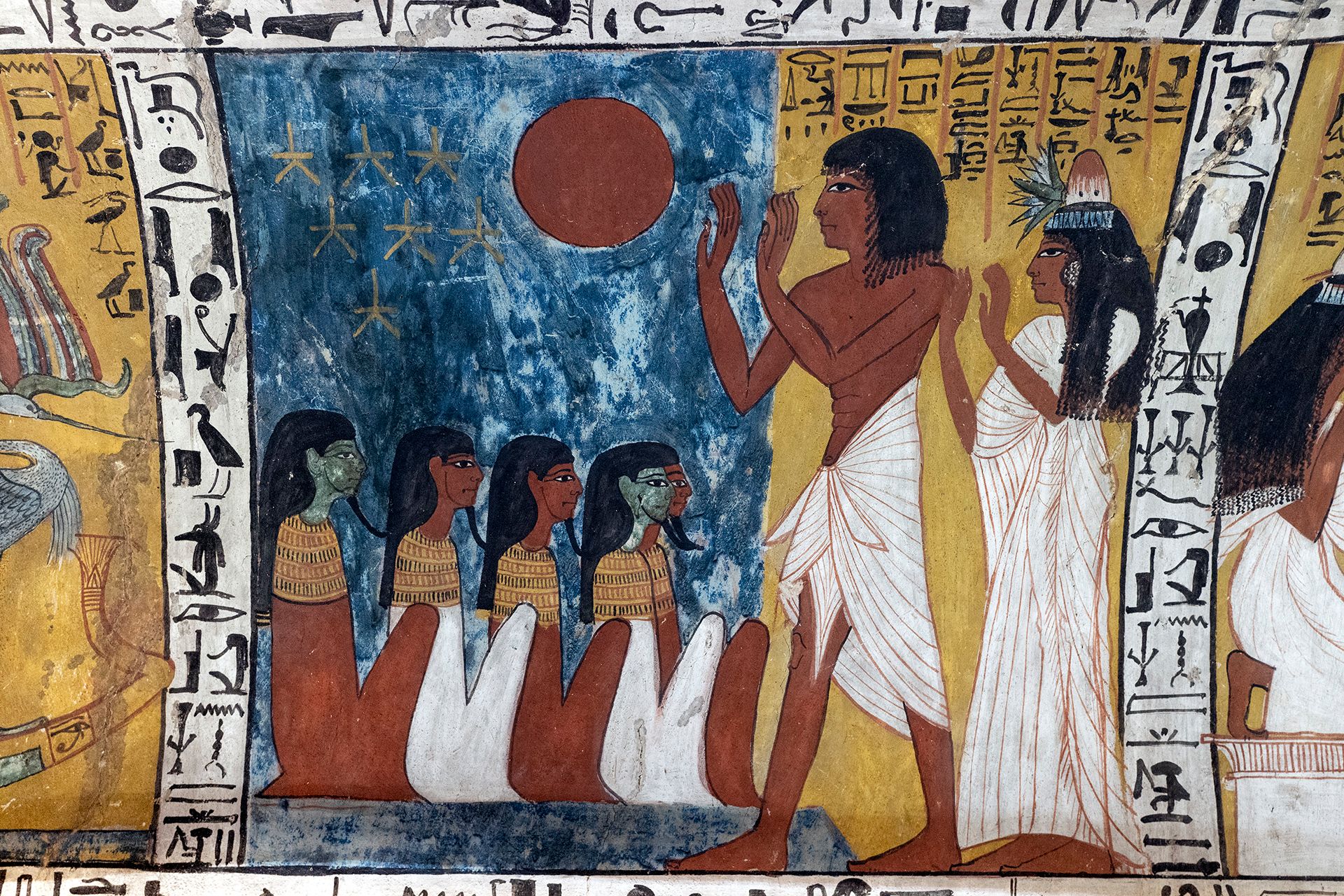
Osiris - the dead sun - could be a solar eclipse at the time of the new moon. This famous painting was chosen for the poster of the great exhibition Pharaoh’s Artists organized by The Louvres/Paris in 2002
© pascal schmidt / hans lucas - March 2021
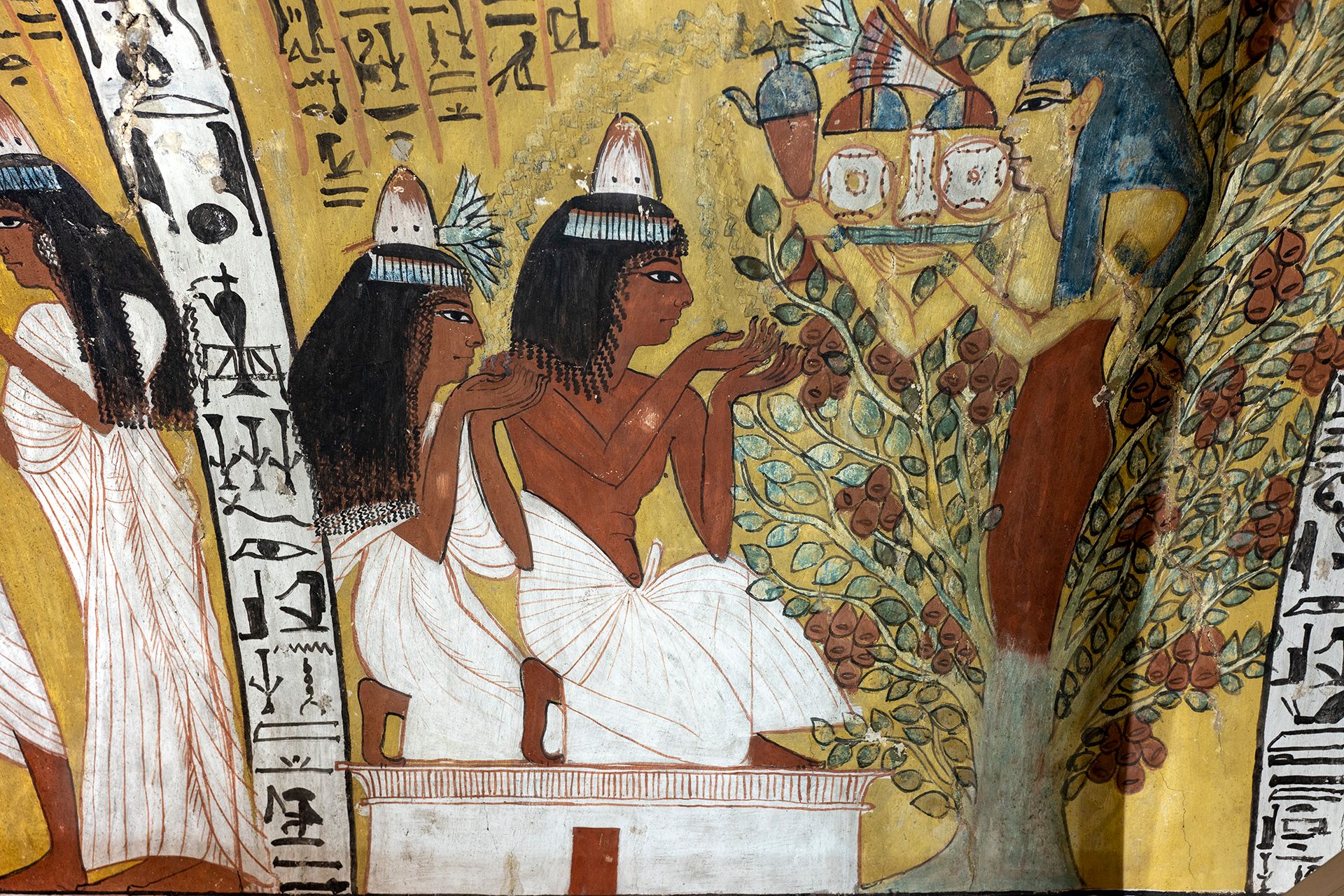
Receiving libation water by the sky-goddess Nout standing in the sycamore tree
© pascal schmidt / hans lucas - March 2021
TT219 Nebenmaat tomb | Deir el-Medina
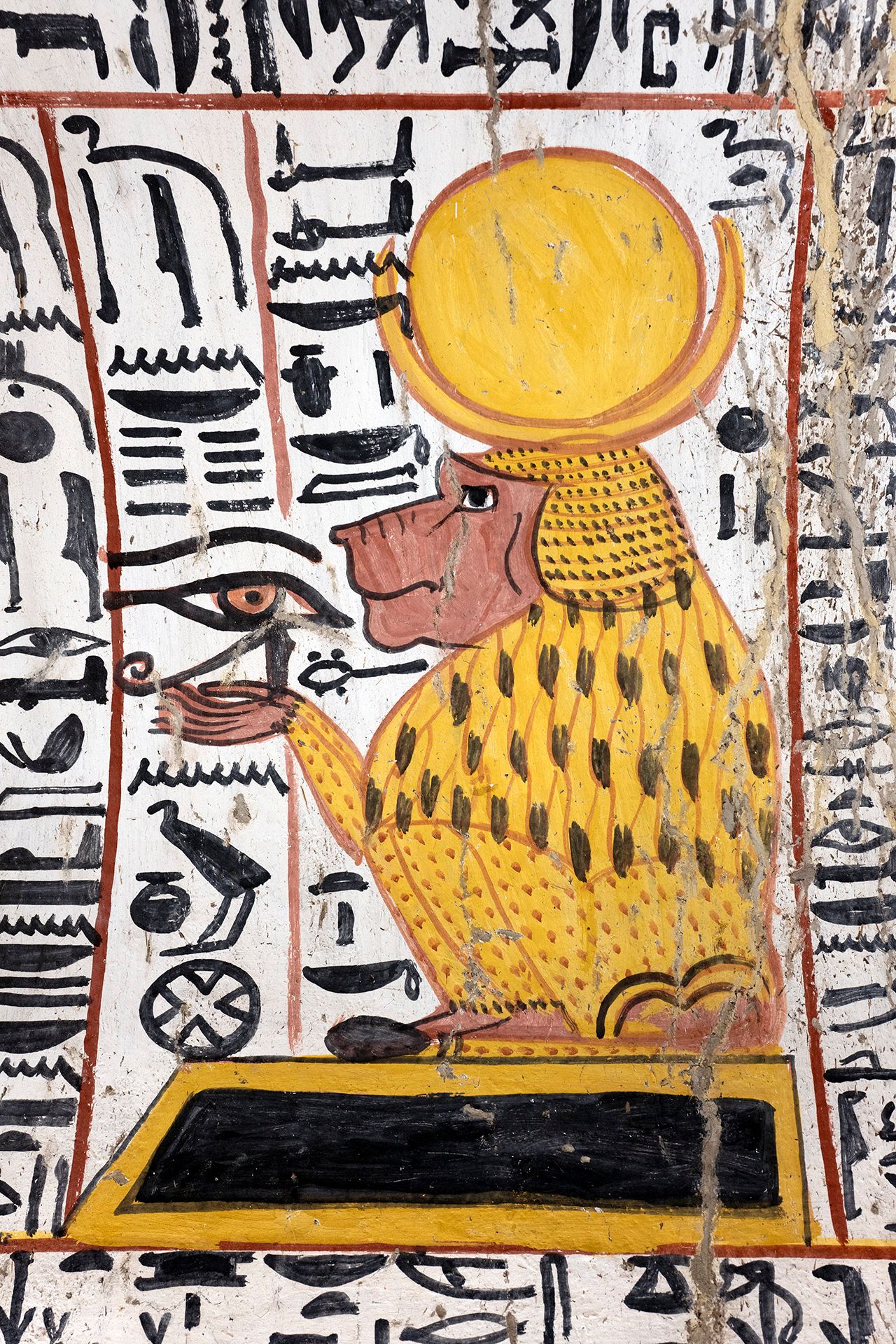
The baboon moon-god Thot captures the light of the moon, whose cycles it governs, to such an extent that he was nicknamed the Lord of Time. Baboons let out loud territorial cries at dawn, which earned them the association of the solar renaissance as they hailed the raising stars
© pascal schmidt / hans lucas - March 2021
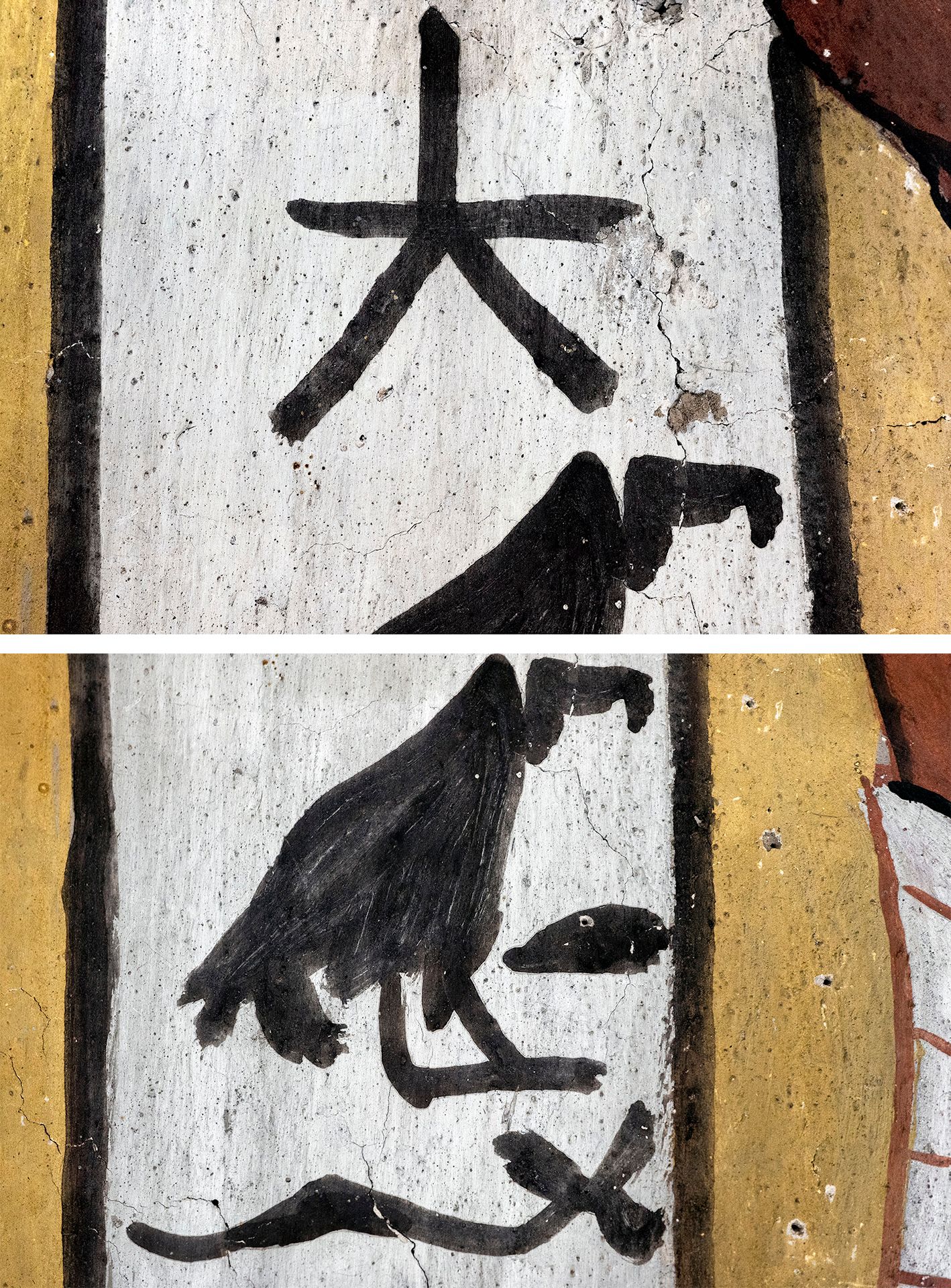
The falcon sky-god Horus associated with the sky, the sun, and war
© pascal schmidt / hans lucas - March 2021
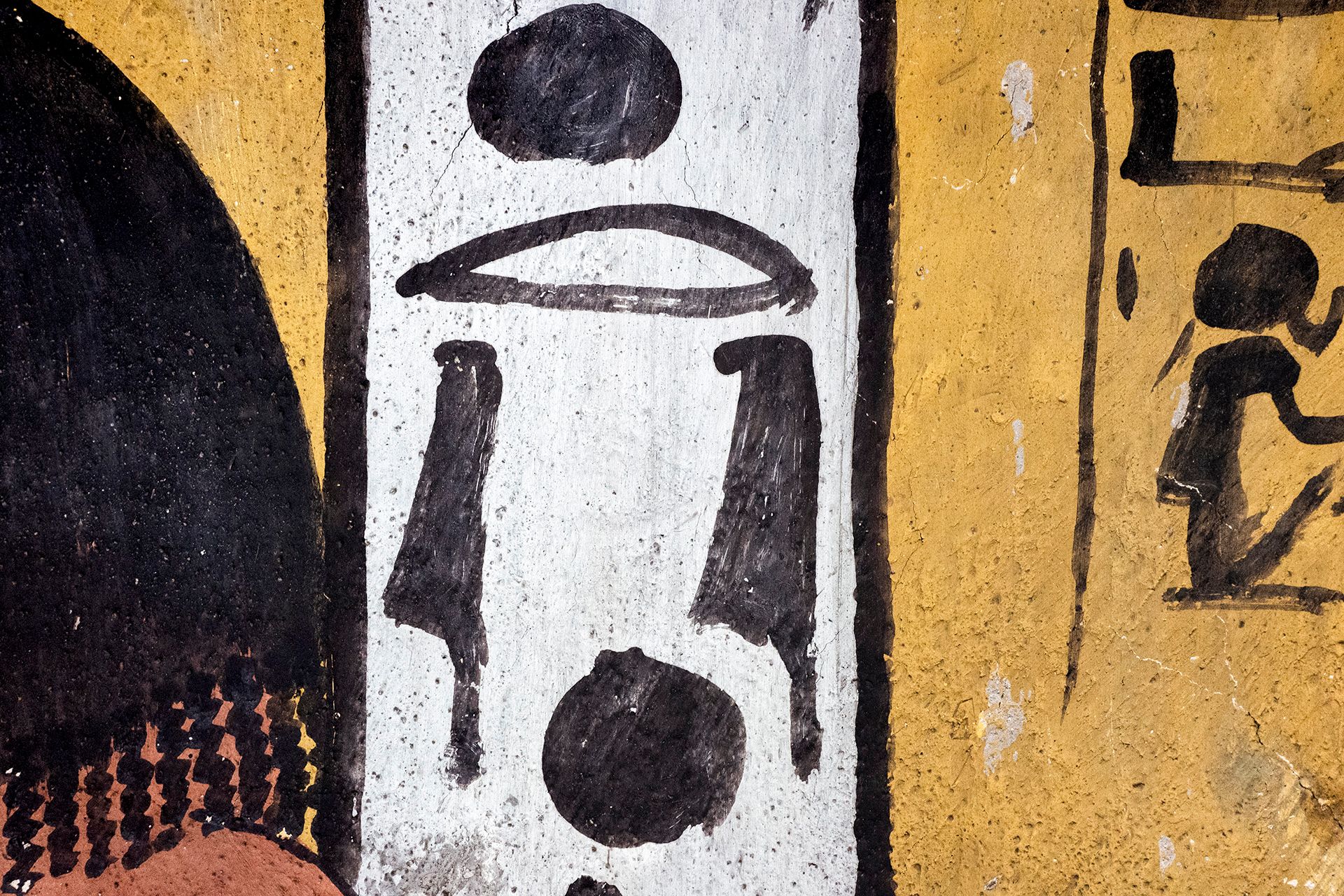
© pascal schmidt / hans lucas - March 2021
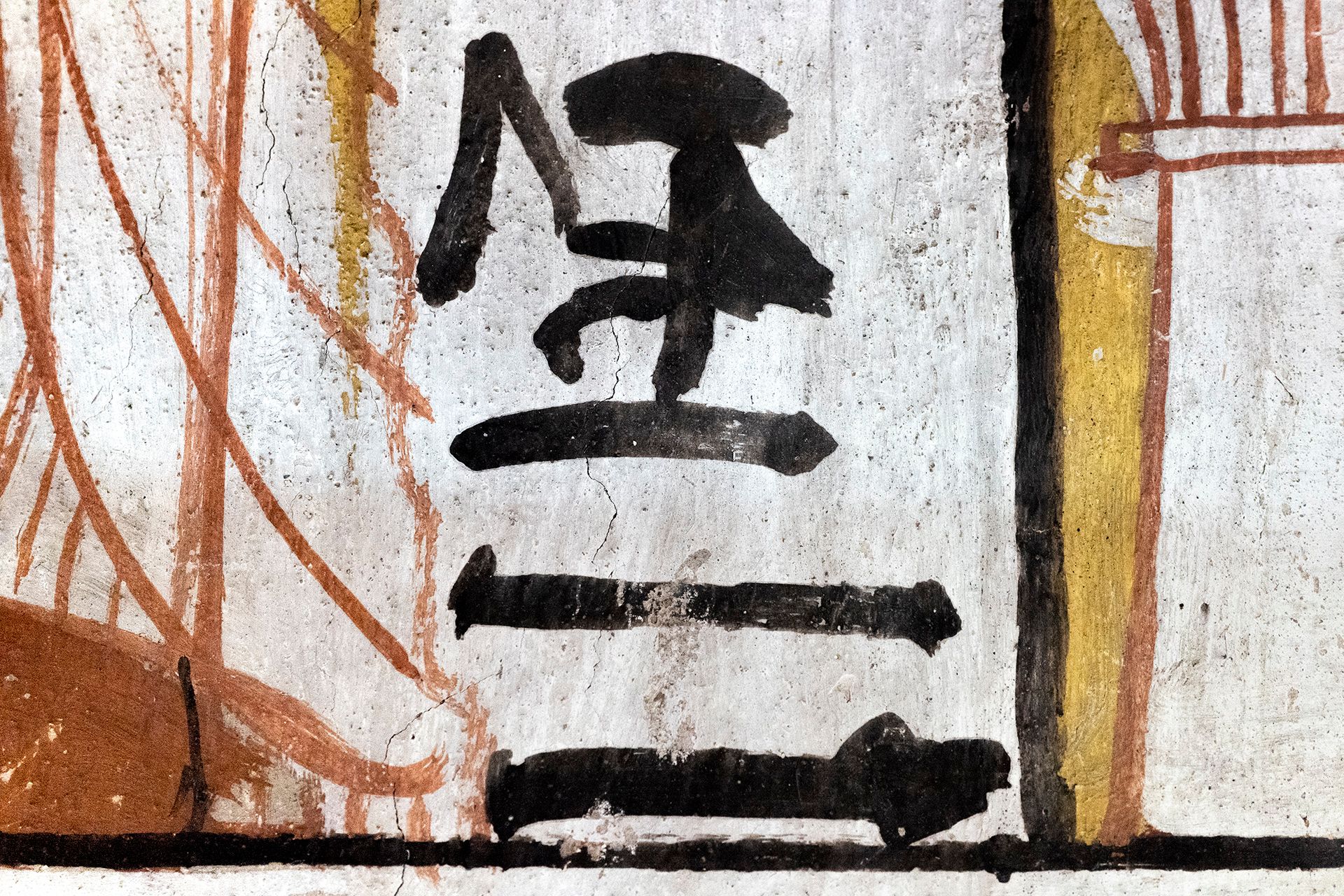
© pascal schmidt / hans lucas - March 2021
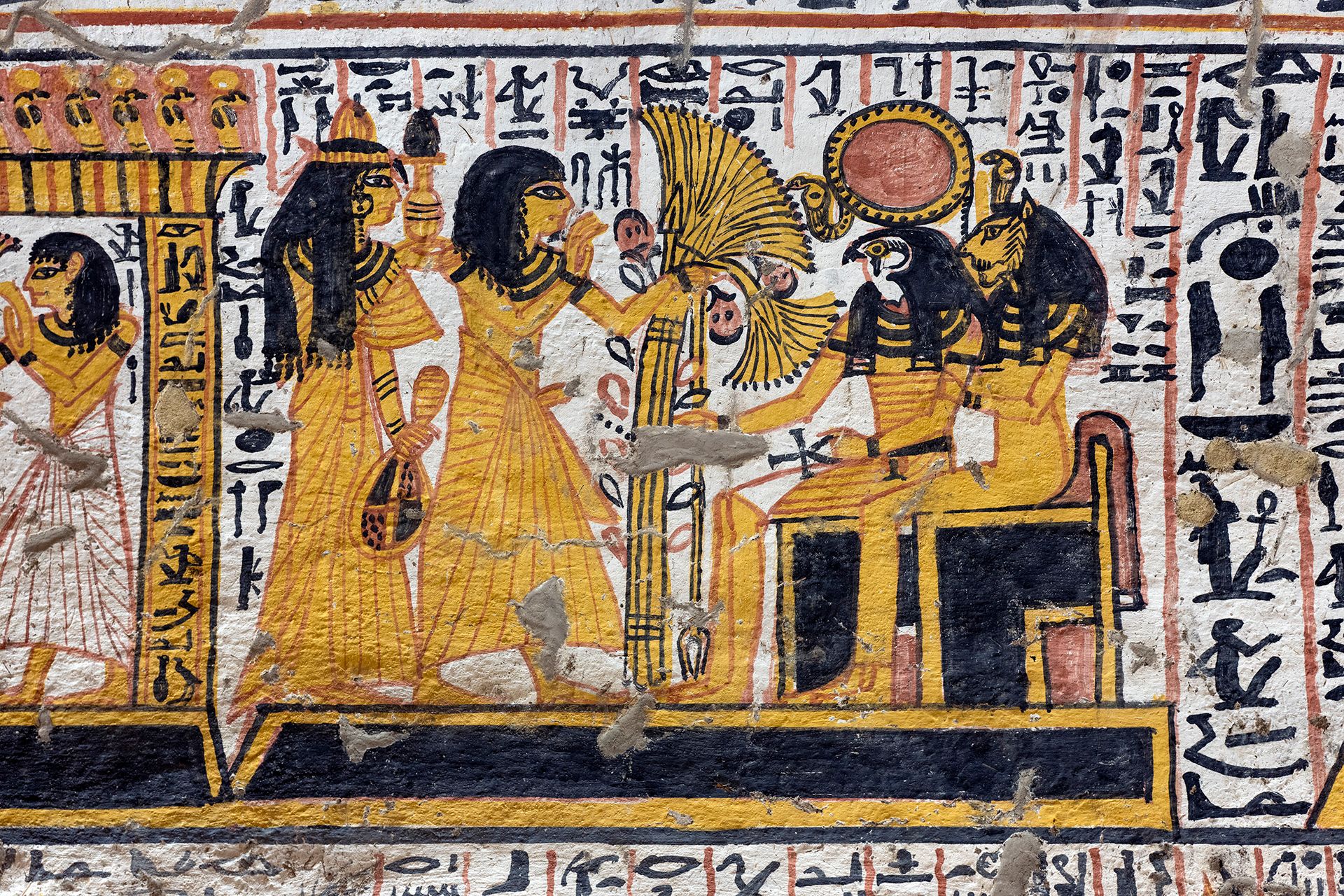
The glorious dawn when Ra emerges from the Nun - the primordial ocean
© pascal schmidt / hans lucas - March 2021

The glorious dawn when Ra emerges from the Nun - the primordial ocean
© pascal schmidt / hans lucas - March 2021
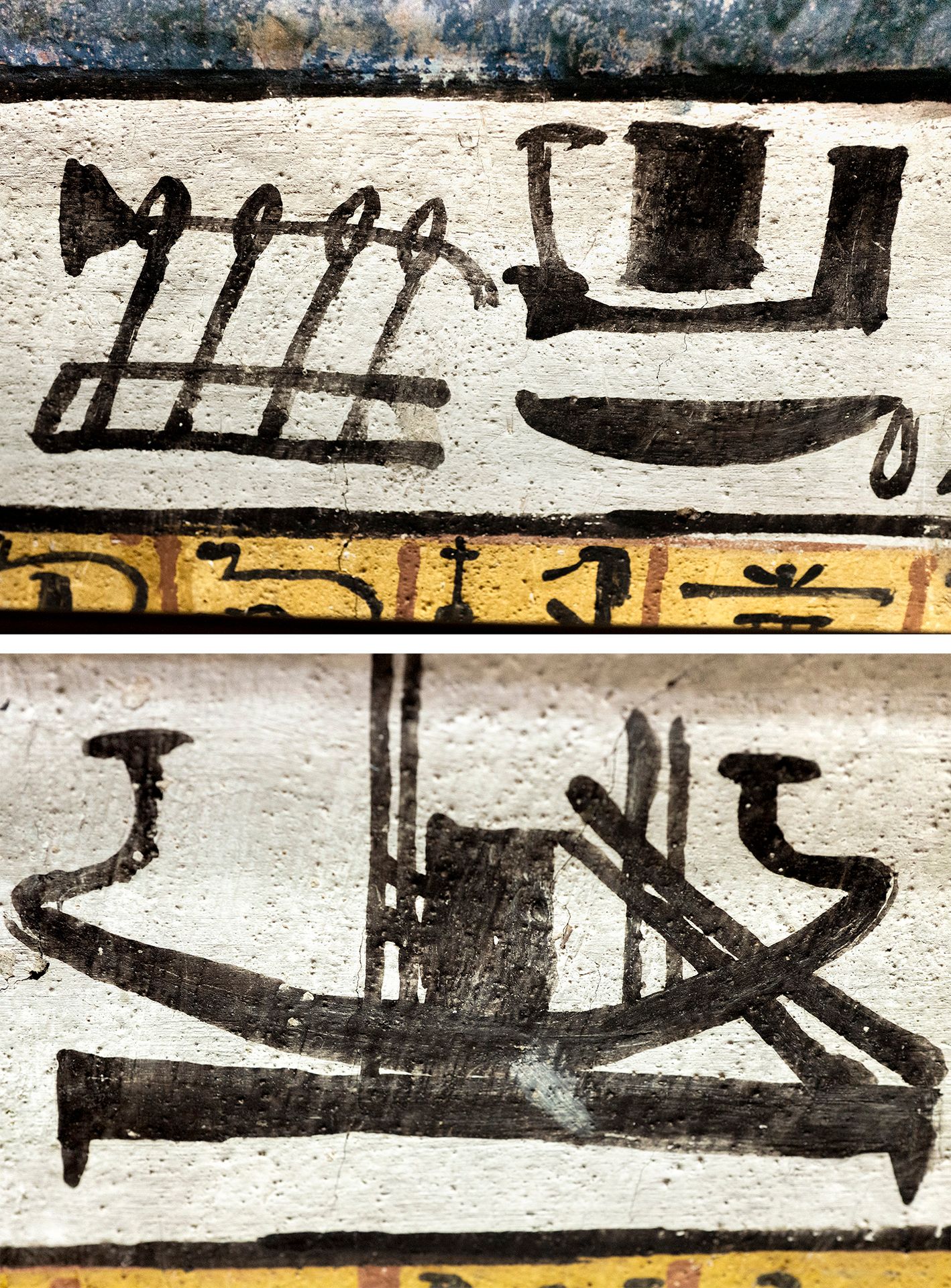
© pascal schmidt / hans lucas - March 2021
TT219 Nebenmaat tomb - The black man | Deir el-Medina
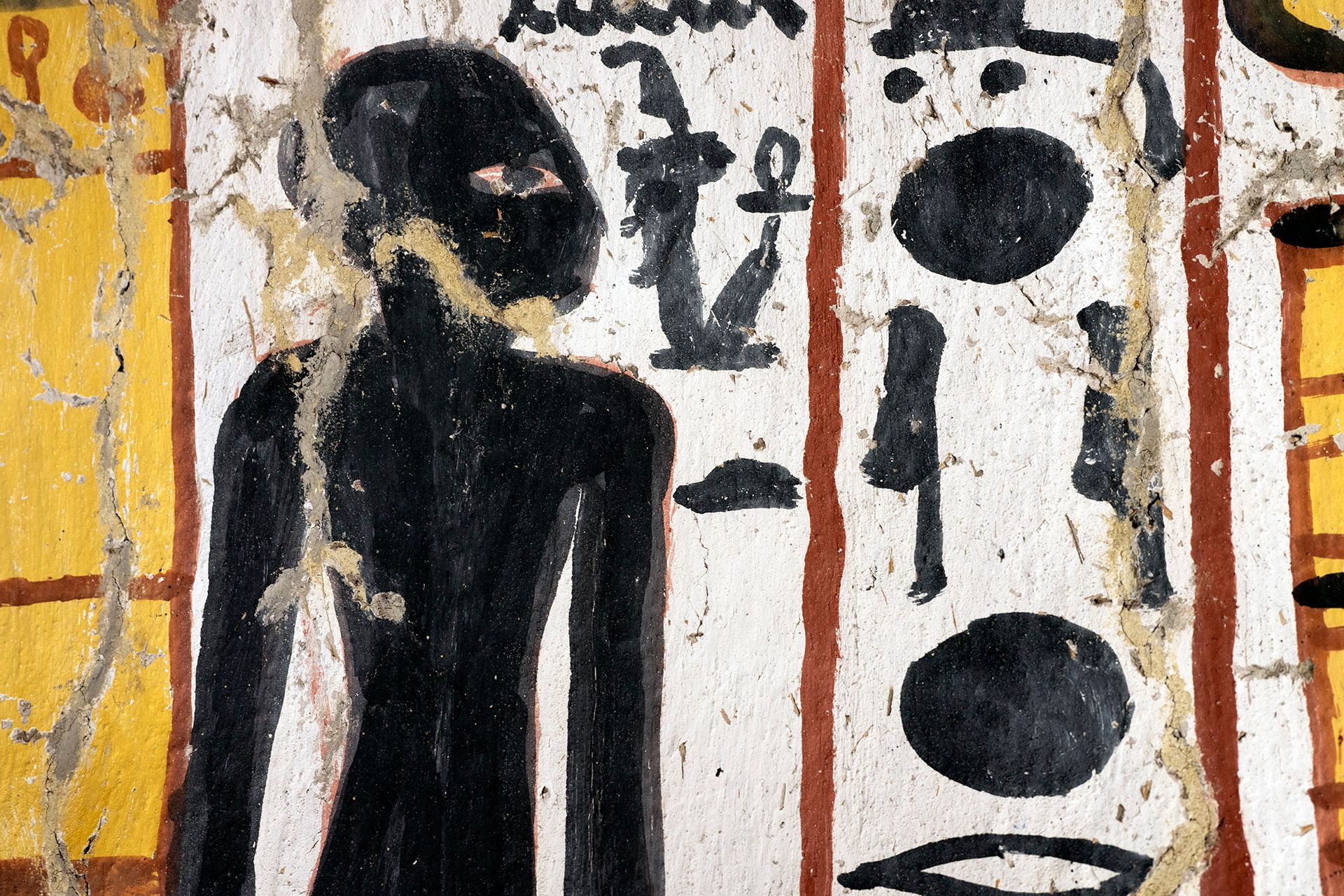
The black man. In antic Egypt, the shadow is considered as a distinct part of one’s personality
© pascal schmidt / hans lucas - March 2021
TT3 Pashedu tomb | Deir el-Medina
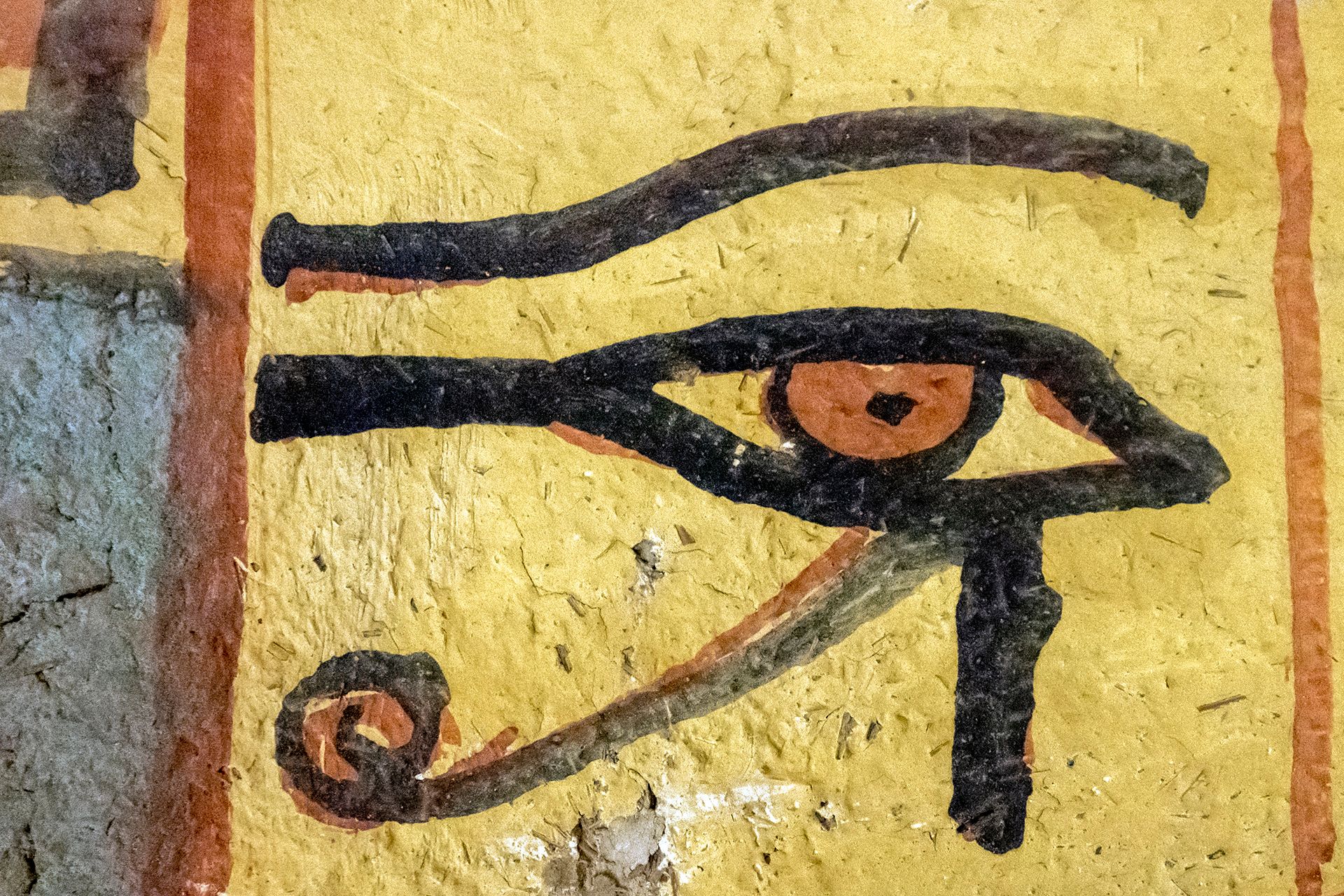
Eye of Horus
© pascal schmidt / hans lucas - March 2021
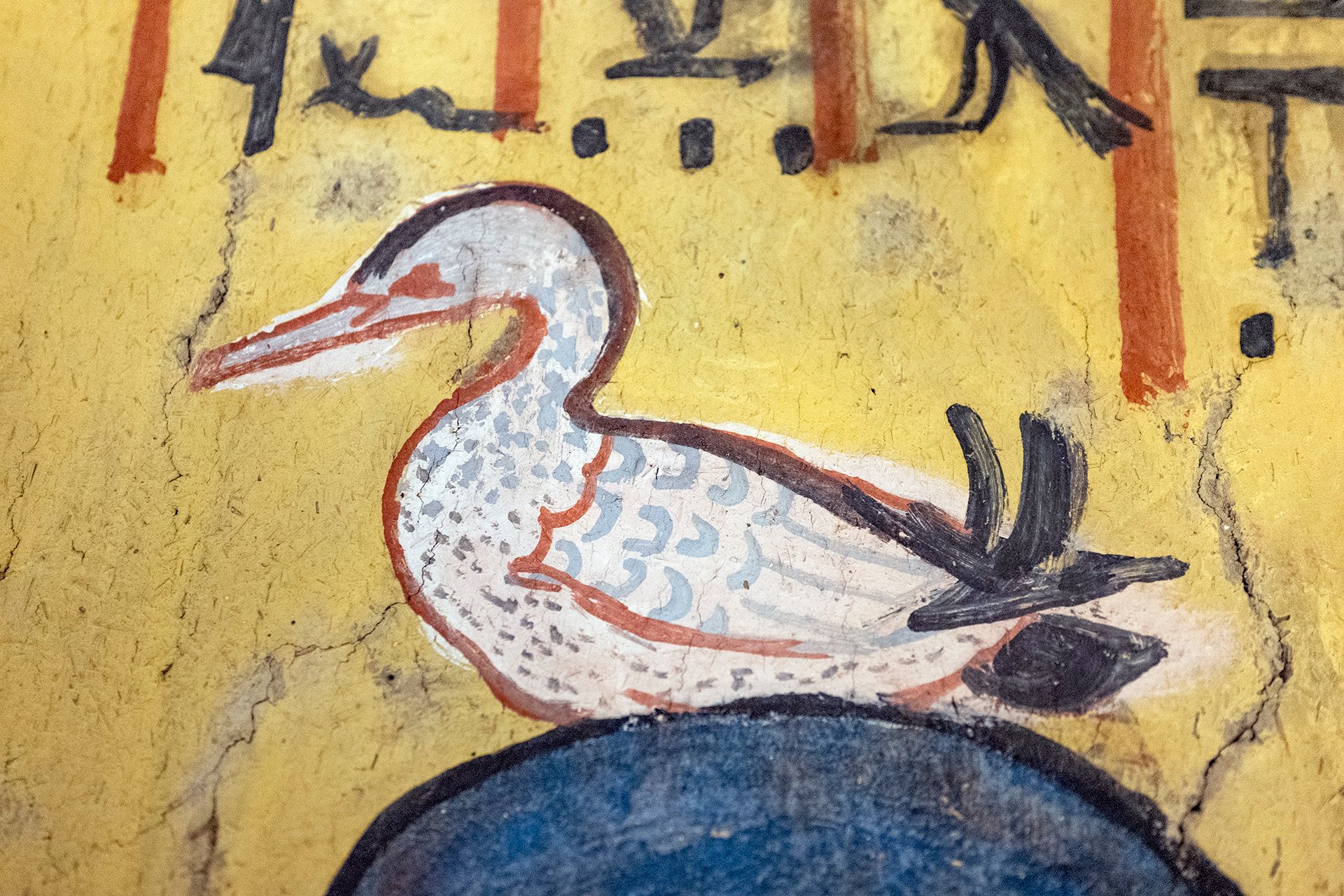
© pascal schmidt / hans lucas - March 2021

The servant
© pascal schmidt / hans lucas - March 2021
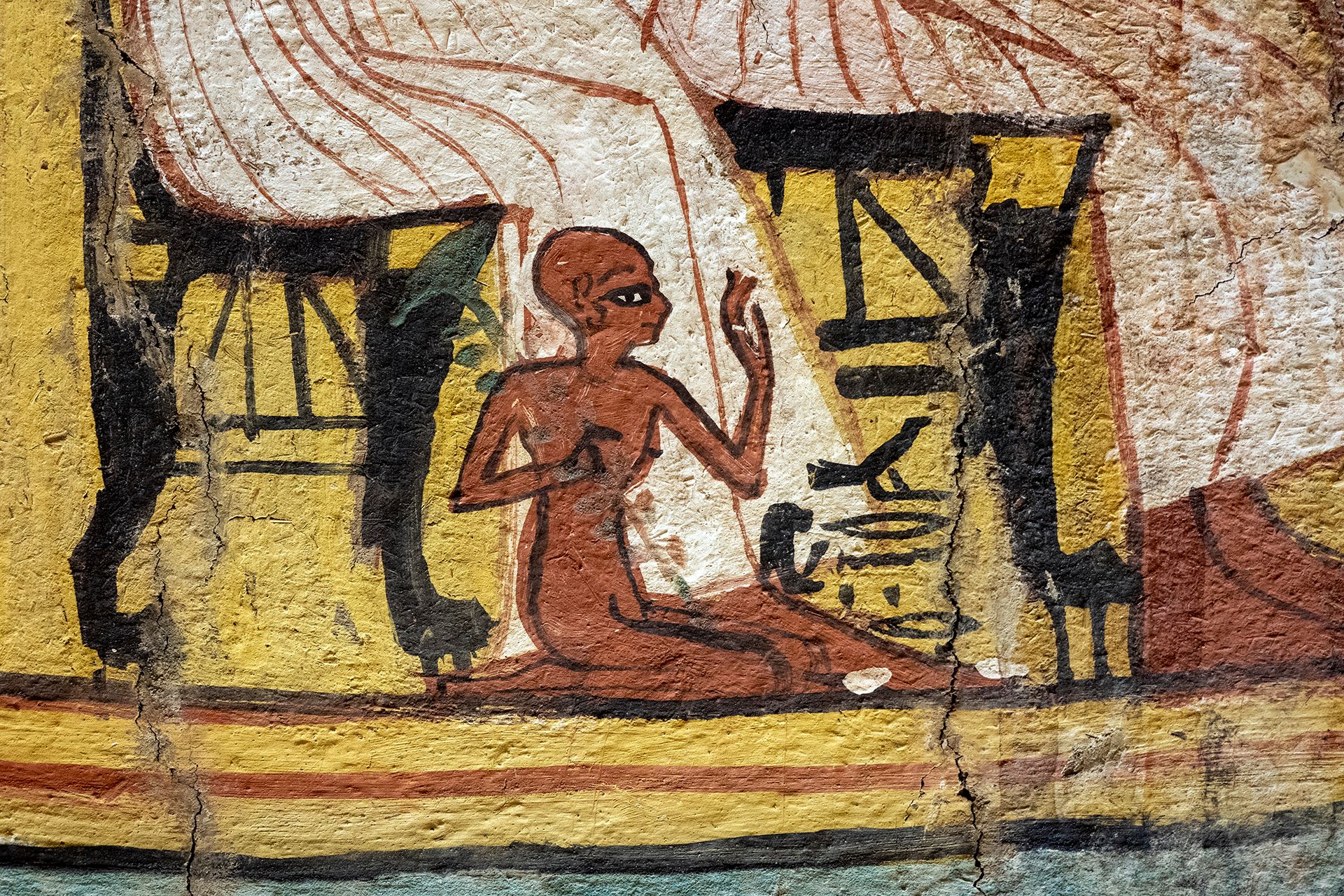
A small figure of Pashedu kneeling at the feet of Osiris.
© pascal schmidt / hans lucas - March 2021
TT335 Nakhtamon tomb | Deir el-Medina
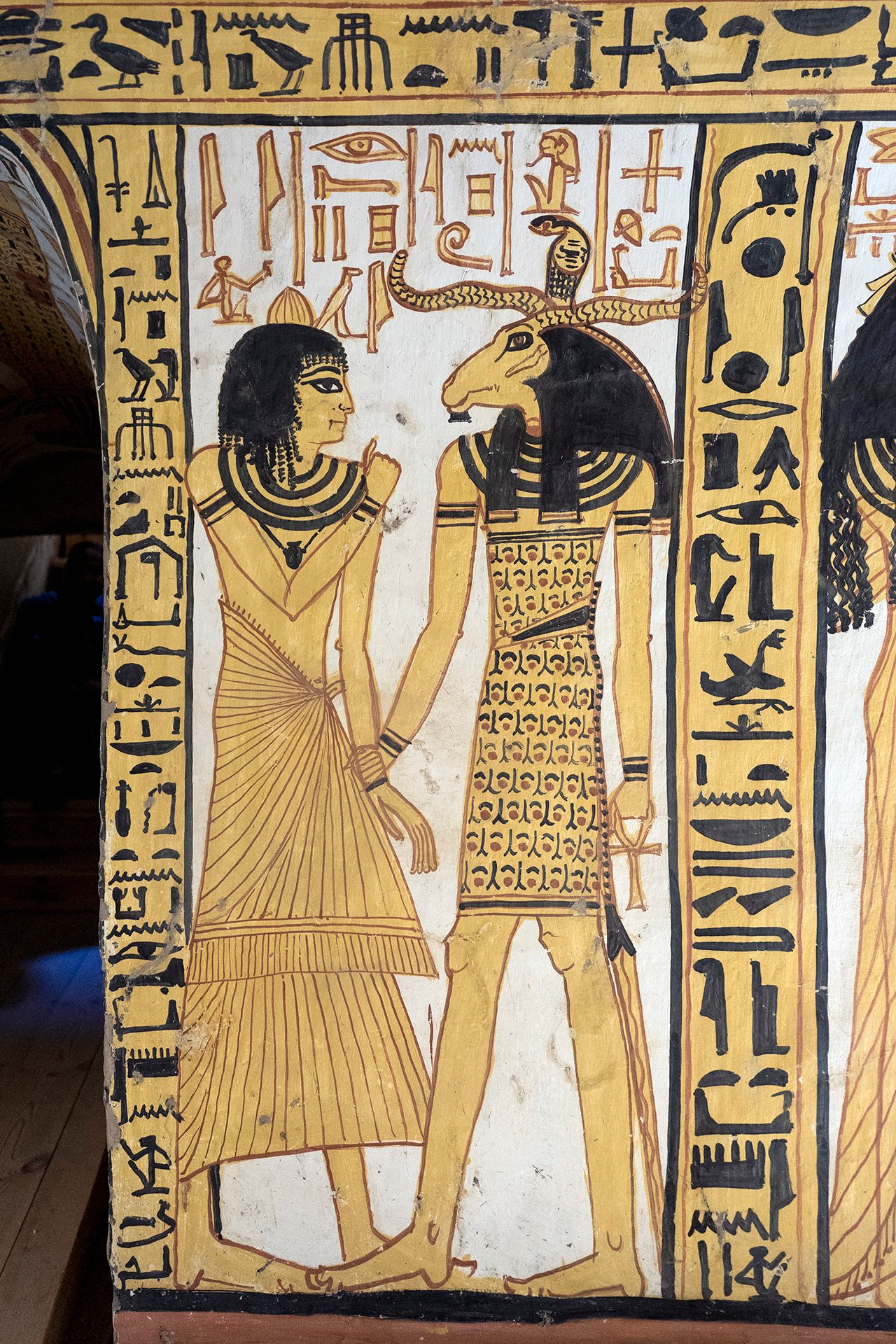
Anubis with the head of the goat god Khnum - father of the fathers
© pascal schmidt / hans lucas - March 2021

Bastet - the lion-cat of Re - kills the serpent Apophis - manifestation of chaos and personification of evil
© pascal schmidt / hans lucas - March 2021
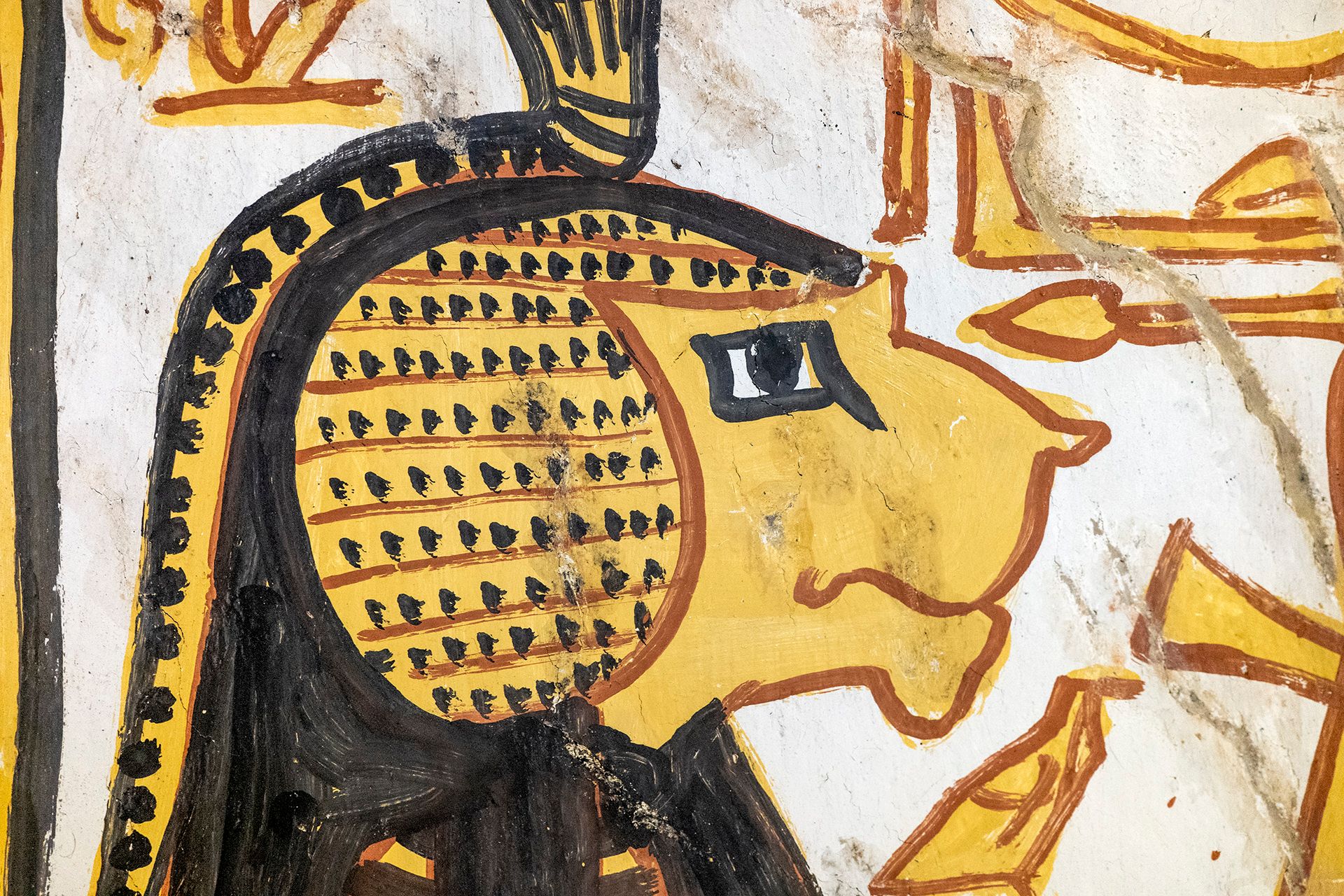
© pascal schmidt / hans lucas - March 2021

The jackal Anubis - god of the dead
© pascal schmidt / hans lucas - March 2021

Anubis with the head of the goat-god Khnum - father of the fathers
© pascal schmidt / hans lucas - March 2021
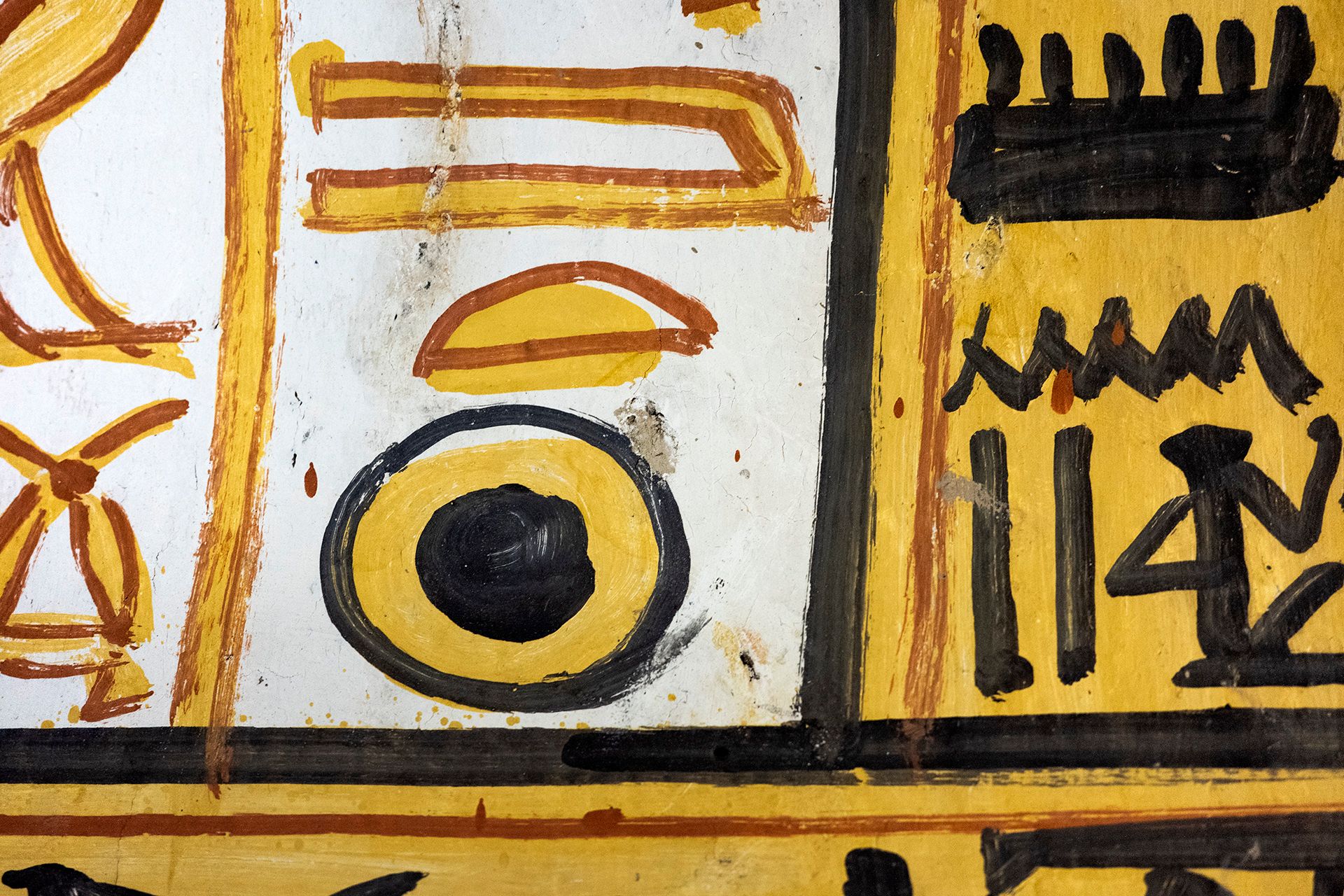
© pascal schmidt / hans lucas - March 2021
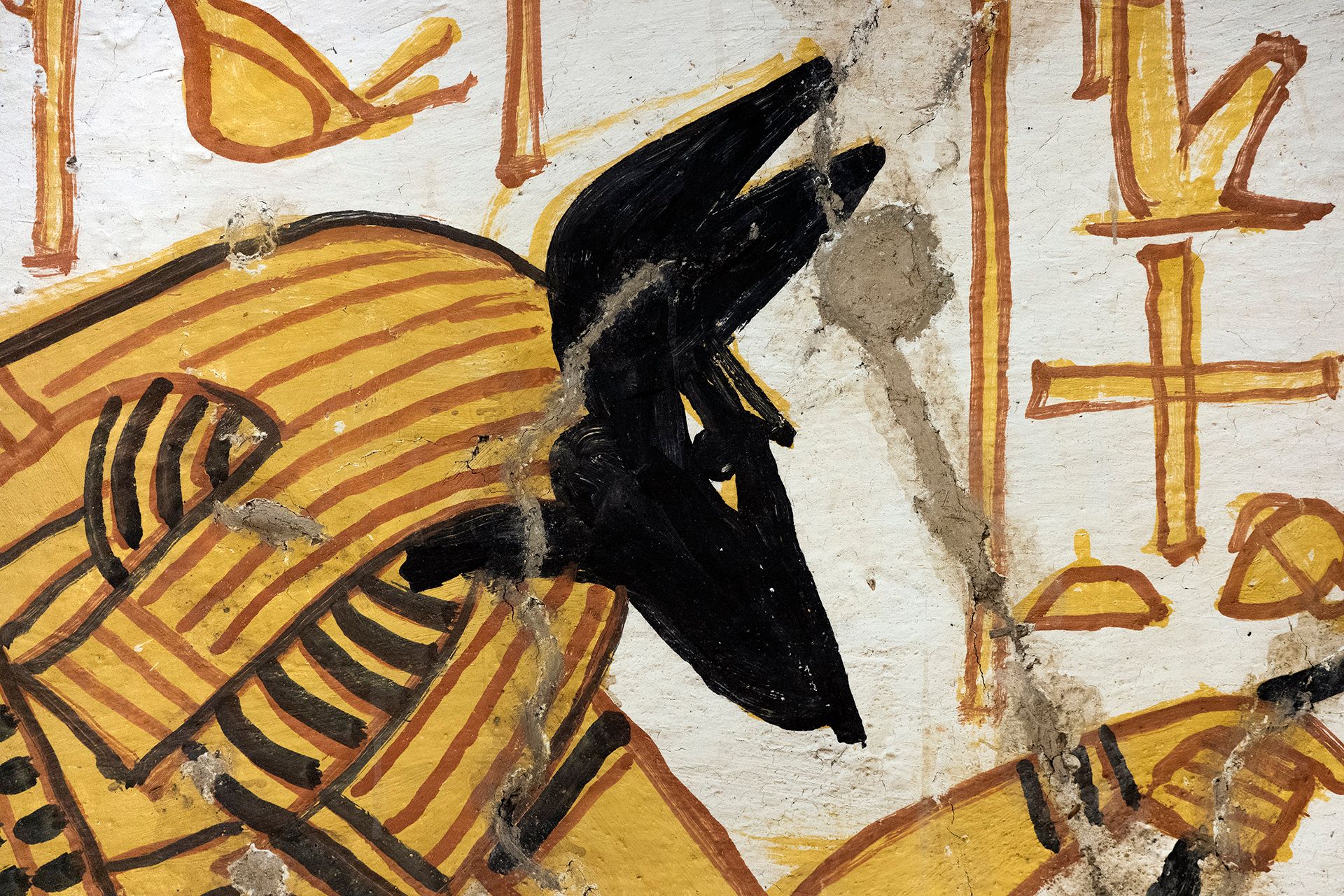
The jackal Anubis - god of the dead
© pascal schmidt / hans lucas - March 2021

The Mourners
© pascal schmidt / hans lucas - March 2021
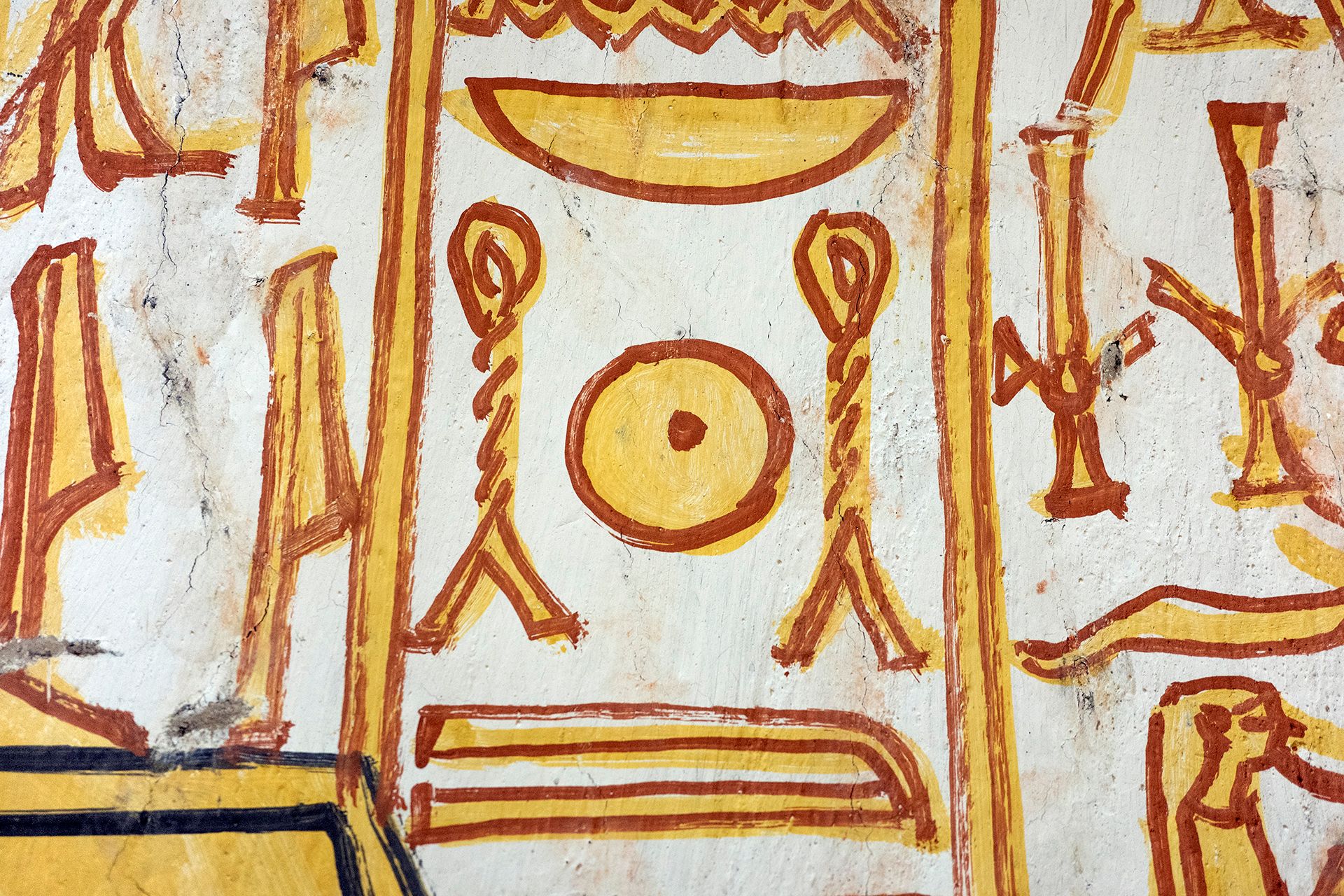
© pascal schmidt / hans lucas - March 2021
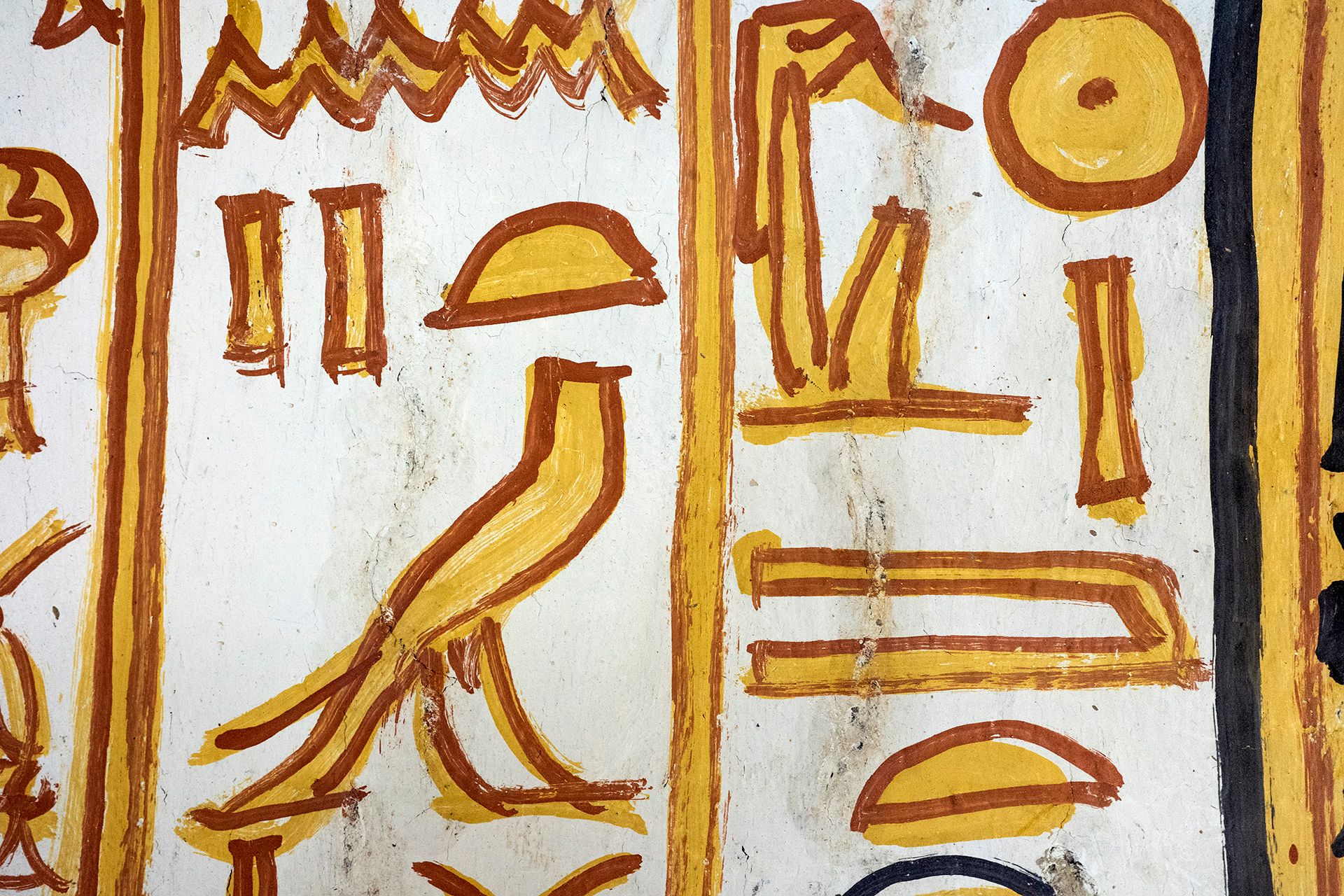
© pascal schmidt / hans lucas - March 2021
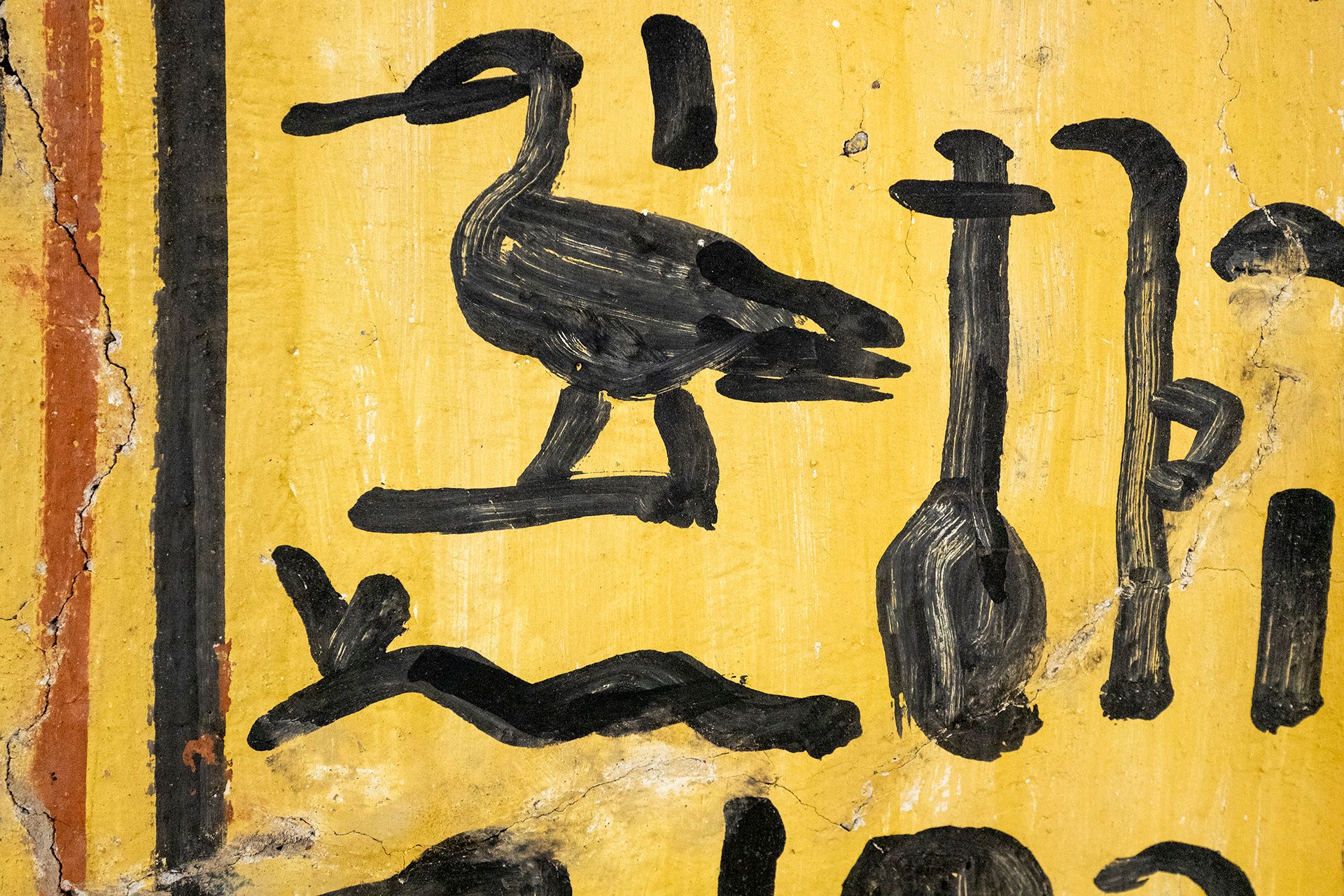
© pascal schmidt / hans lucas - March 2021
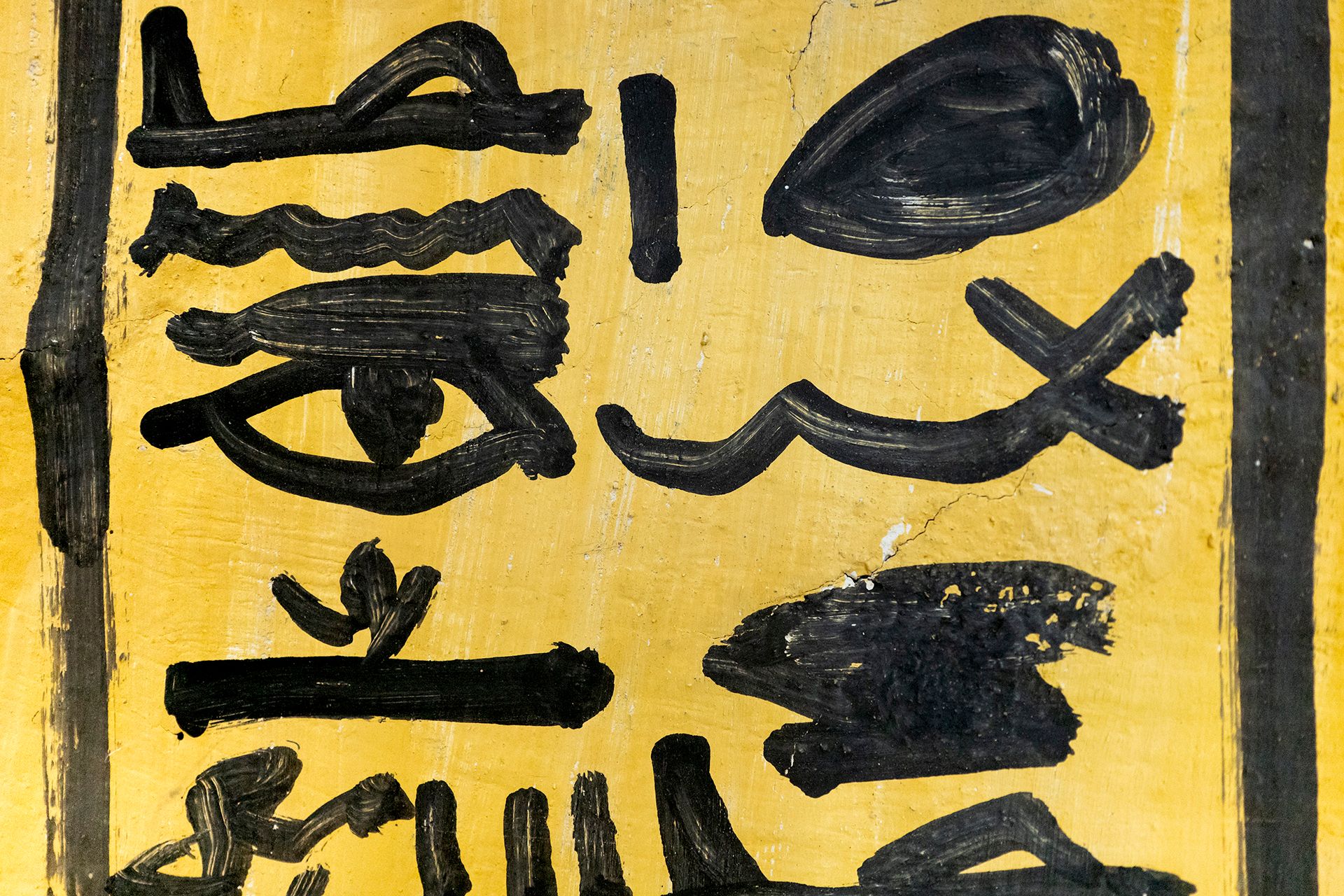
© pascal schmidt / hans lucas - March 2021


